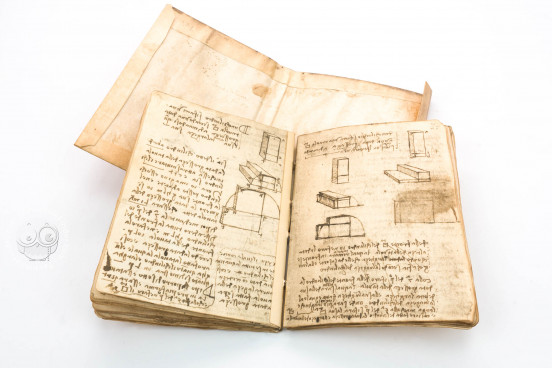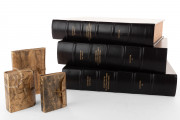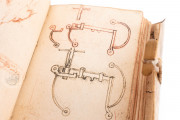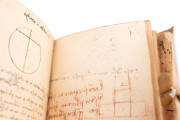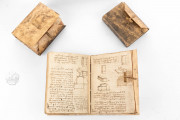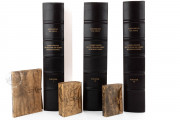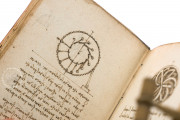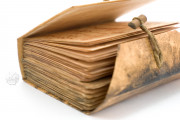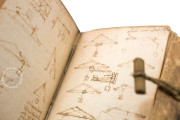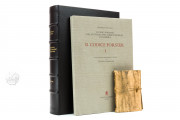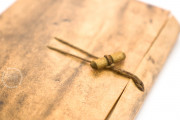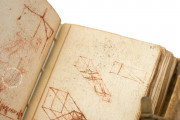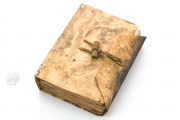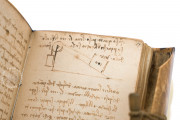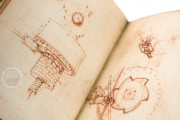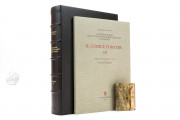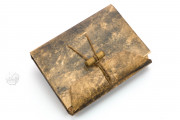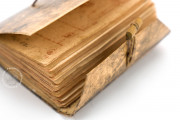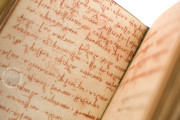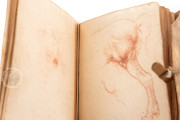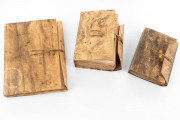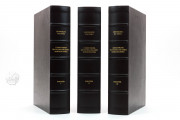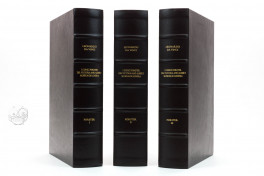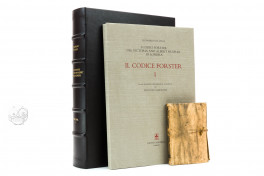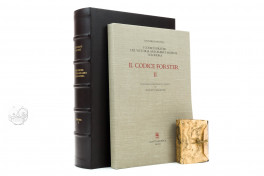The Forster Codices comprise three manuscripts, each distinguished by diverse subjects and dates. Initially owned by Francesco Melzi, they later passed to Pompeo Leoni before finding their way to Venice at an unspecified time. In the nineteenth century, Count Edward George Lytton acquired them, and upon his death, they were inherited by John Forster, who subsequently bequeathed them to the Victoria and Albert Museum in 1876.
The topics explored within the codices are wide-ranging, encompassing significant mathematical and geometrical studies, research on hydraulic machinery, physics annotations, and grammatical studies. They also contain various reflections, including cosmological themes, references to fables and mottos, moral declarations, and autobiographical details. Additionally, the codices feature numerous sketches, including those for an unrealized equestrian monument to Francesco Sforza, urban planning studies for Milan, and architectural designs for the Duomo.
Forster Codex I
It contains two notebooks in 14.5 × 10 cm format. The first was composed in Florence and is dated to 1505, while the second, composed in Milan, dates back to a period between 1487 and 1490. Written in Leonardo's famous mirror writing, the explored themes range from hydraulic engineering to a treatise on solid measurement.
Forster Codex II
It contains two notebooks in 9 × 7.5 cm format. The first is attributed to around 1497, while the second can be traced back to 1495. Both were compiled in Milan while Leonardo was in the service of Duke Ludovico Sforza (1452-1508). The first notebook contains notes and diagrams on the theory of proportions, as well as various sketches, including looms for weaving, architecture, and some figurative drawings such as a Madonna with Child. The second notebook includes notes on the theory of weights and balances, as well as sketches on perpetual motion, helmet designs, and a recipe for making colors.
Forster Codex III
Probably written in Milan between 1493 and 1496, Forster Codex III includes a notebook comprising 94 sheets in 9 × 6 cm format, concerning heterogeneous topics. It is indeed the most varied of all Leonardo's notebooks preserved at the Victoria and Albert Museum in London, featuring notes and diagrams on geometry, considerations on weights and hydraulics interspersed with annotations and sketches on various subjects, such as closing devices, architecture, costumes, hats, and human and animal anatomy.
It also includes recipes for artistic practice, explaining, for example, how to prepare linseed oil with mustard seeds, mentioning books of interest owned by other people, as in the case of a 'fine herbal' by a certain Giuliano da Marliano. Since Leonardo wrote in mirror writing (backwards and from right to left), he usually started with what we would consider the last page. Occasionally, he also used the notebook upside down, as towards the end of the volume. Red pencil was predominantly used for sketches.
We have 4 facsimiles of the manuscript "Forster Codices":
- Codici Forster facsimile edition published by Giunti Editore, 1992
- Codice Forster I facsimile edition published by Collezione Apocrifa Da Vinci, 2014
- Codice Forster II facsimile edition published by Collezione Apocrifa Da Vinci, 2014
- Codice Forster III facsimile edition published by Collezione Apocrifa Da Vinci, 2015

